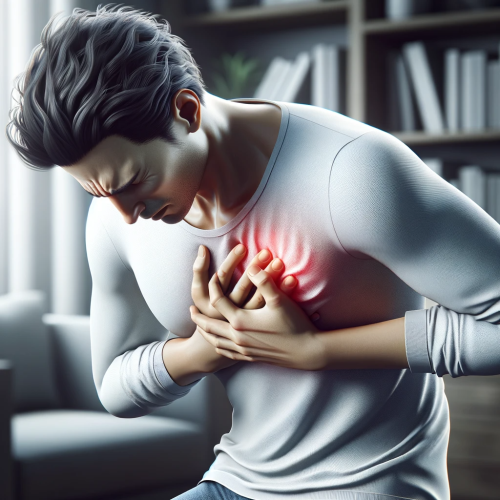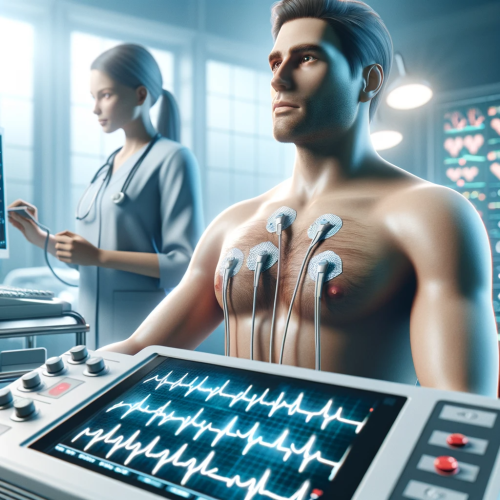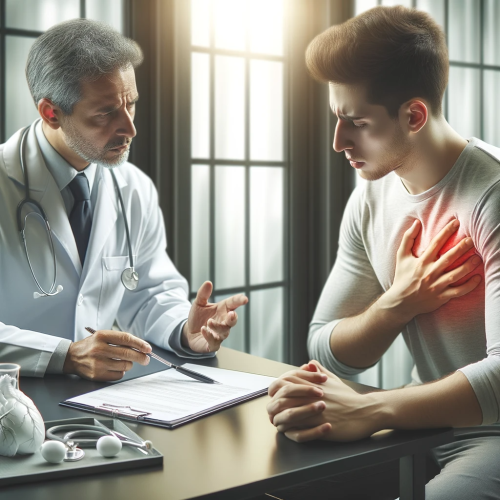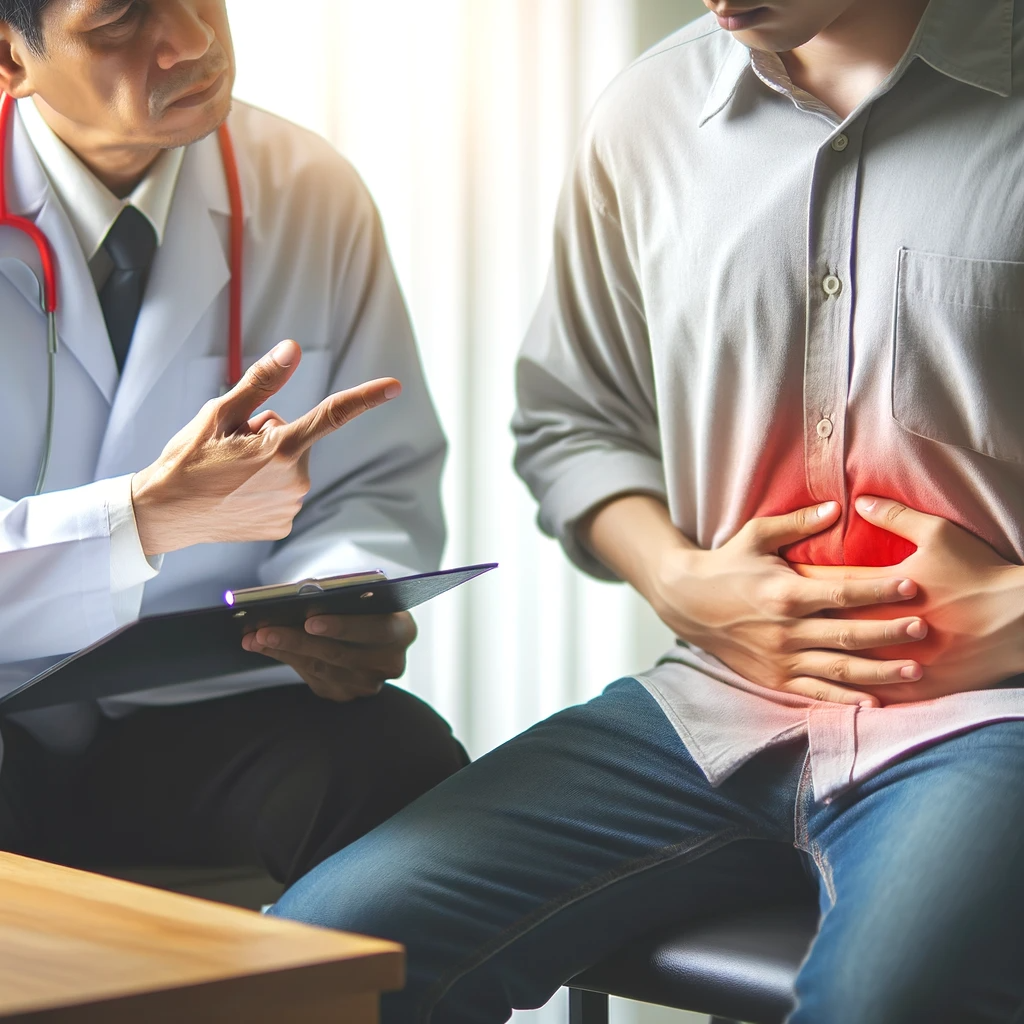
When it comes to chest pain, the causes and treatments can be complex. But with the right information and medical care, you can uncover what’s causing your chest pain and get on the path to relief. From lifestyle changes to medications, there are a variety of treatments available that can help you manage your symptoms and feel better. Learn more about the causes of chest pain and how to find relief today.
Exploring the Different Types of Chest Pain: Causes and Treatments
Chest pain is a common symptom that can be caused by a variety of conditions. It can range from mild to severe and may be accompanied by other symptoms such as shortness of breath, nausea, or sweating. It is important to understand the different types of chest pain and their causes in order to properly diagnose and treat the condition.
The most common type of chest pain is angina, which occurs when the heart muscle does not receive enough oxygen-rich blood. This type of chest pain usually feels like pressure or squeezing in the center or left side of the chest and may spread to other areas such as the arms, neck, jaw, back, or stomach. Angina can be caused by coronary artery disease (CAD), which occurs when plaque builds up in your arteries and restricts blood flow to your heart muscle. Treatment for angina typically includes lifestyle changes such as quitting smoking and exercising regularly as well as medications such as nitrates or beta blockers that help relax narrowed arteries so more blood can flow through them.
 Another type of chest pain is costochondritis, which occurs when there is inflammation in the cartilage that connects your ribs to your breastbone (sternum). This type of chest pain usually feels like sharp stabbing pains on either side of your sternum that worsen with movement or deep breathing. Costochondritis often resolves on its own but treatment may include anti-inflammatory medications such as ibuprofen or naproxen sodium along with rest and avoiding activities that aggravate symptoms until they improve.
Another type of chest pain is costochondritis, which occurs when there is inflammation in the cartilage that connects your ribs to your breastbone (sternum). This type of chest pain usually feels like sharp stabbing pains on either side of your sternum that worsen with movement or deep breathing. Costochondritis often resolves on its own but treatment may include anti-inflammatory medications such as ibuprofen or naproxen sodium along with rest and avoiding activities that aggravate symptoms until they improve.
A third type of chest pain is pleurisy, which occurs when there is inflammation in the lining around your lungs (pleura). This type of chest pain usually feels like sharp stabbing pains on one side near where you breathe deeply from; it may also cause shortness of breath due to fluid buildup between layers within this lining called pleural effusion.
Pleurisy can be caused by viral infections such as influenza A virus subtype H1N1 (swine flu) but it can also occur due to autoimmune diseases like lupus or rheumatoid arthritis; exposure to certain chemicals; trauma; tumors; radiation therapy; pulmonary embolism; pneumonia; tuberculosis; etc.. Treatment for pleurisy typically includes antibiotics if an infection has been identified along with anti-inflammatory medications such as ibuprofen for symptom relief while allowing time for healing within this lining around our lungs known medically referred to “pleura” .
Finally another common cause for Chest Pain could include Gastroesophageal Reflux Disease (GERD) which involves acid refluxing up into our esophagus causing burning sensations behind our breastbone area known medically referred too “heartburn”.
GERD treatment options include lifestyle modifications including avoiding certain foods/beverages known too trigger these episodes along with taking over-the-counter antacids/acid reducers if needed . If these treatments do not provide adequate relief then stronger prescription medications might need too be considered depending upon severity.
Diagnosing Chest Pain: How to Recognize Warning Signs
Chest pain is a common symptom that can be caused by a variety of medical conditions. It is important to recognize the warning signs of chest pain and seek medical attention if you experience any of these symptoms.
The most common cause of chest pain is angina, which occurs when the heart muscle does not receive enough oxygen-rich blood. Angina can feel like pressure or squeezing in the chest, and it may also spread to other areas such as the arms, neck, jaw, or back. Other symptoms include shortness of breath, nausea, sweating, and fatigue. If you experience any of these symptoms along with chest pain it is important to seek medical attention immediately as it could be a sign of a heart attack.
Other causes of chest pain include pulmonary embolism (a blockage in an artery in the lungs), pleurisy (inflammation in the lining around your lungs), pneumonia (an infection in your lungs), gastroesophageal reflux disease (GERD) (stomach acid flowing back up into your esophagus), costochondritis (inflammation around your rib cage) and anxiety or panic attacks. Each condition has its own set of warning signs that should be taken seriously if experienced along with chest pain.
If you are experiencing any type of chest discomfort it is important to seek medical attention right away so that an accurate diagnosis can be made and appropriate treatment can begin as soon as possible. Your doctor will likely ask questions about your health history and perform tests such as an electrocardiogram or echocardiogram to determine what may be causing your symptoms so they can provide you with proper care for whatever condition may be present.
It’s always better to err on the side caution when dealing with potential health issues like chest pains; don’t wait until something more serious develops before seeking help from a qualified healthcare professional!
Uncovering the Mystery Behind Cardiac-Related Chest Pain
Chest pain is one of the most common reasons people visit the emergency room. It can be a sign of something serious, such as a heart attack, or it could be something less serious, such as indigestion. But how do doctors know what’s causing the chest pain? Uncovering the mystery behind cardiac-related chest pain requires careful evaluation and testing to determine if there is an underlying heart condition that needs to be addressed.
When someone arrives in the ER with chest pain, doctors will take a detailed medical history and perform a physical exam to assess for any signs or symptoms that may indicate an underlying cardiac issue. The patient’s vital signs are also monitored closely during this time. If necessary, additional tests may be ordered to help diagnose any potential heart problems. These tests can include an electrocardiogram (ECG), echocardiogram (ECHO), stress test, or imaging studies like X-rays or CT scans of the chest area.
The ECG is used to measure electrical activity in the heart and detect any irregularities that could indicate coronary artery disease or other conditions like arrhythmias or valve problems. An ECHO uses sound waves to create images of your heart so doctors can see how well it’s functioning and look for any structural abnormalities that might explain your symptoms.
A stress test measures how well your heart responds when you exercise by monitoring your blood pressure and pulse rate while you walk on a treadmill at increasing speeds over time. Imaging studies provide detailed pictures of your internal organs so doctors can look for blockages in arteries leading to your heart muscle as well as other potential causes of chest pain like tumors or infections in nearby organs like lungs or esophagus.
Once all these tests have been completed, doctors will use their findings along with information from your medical history and physical exam results to make an accurate diagnosis about what’s causing your chest pain and recommend appropriate treatment options if needed . With careful evaluation and testing , uncovering the mystery behind cardiac-related chest pain becomes much easier – allowing patients peace of mind knowing they are receiving proper care for their condition.
The Role of Lifestyle Changes in Treating Chest Pain
Chest pain is a common symptom of many medical conditions, and lifestyle changes can play an important role in treating it. Making healthy lifestyle choices can help reduce the risk of chest pain, as well as reduce its severity and frequency.
The first step in treating chest pain is to identify the underlying cause. If the cause is related to lifestyle factors such as smoking, poor diet, or lack of exercise, then making changes to these habits can be beneficial. Quitting smoking has been shown to significantly reduce the risk of chest pain due to coronary artery disease (CAD). Eating a balanced diet that includes plenty of fruits and vegetables can also help lower cholesterol levels and improve overall heart health. Regular physical activity helps keep blood pressure under control and strengthens the heart muscle, which may help prevent or reduce chest pain episodes.
In addition to making healthy lifestyle changes, managing stress levels is also important for reducing chest pain symptoms. Stressful situations can trigger episodes of chest discomfort due to increased heart rate and blood pressure levels. Finding ways to relax such as yoga or meditation may be helpful in reducing stress-related episodes of chest discomfort.
Finally, if you are experiencing frequent or severe episodes of chest discomfort it’s important that you seek medical attention from your doctor right away so they can determine if there are any underlying medical conditions causing your symptoms that need treatment with medications or other therapies such as angioplasty or bypass surgery for CAD patients who have blocked arteries supplying blood flow to their hearts .
Overall, making healthy lifestyle changes such as quitting smoking , eating a balanced diet , exercising regularly , managing stress levels ,and seeking prompt medical attention when needed are all key components in helping treat episodes of chest discomfort .
Understanding the Connection Between Stress and Chest Pain
Stress and chest pain are often linked, but the connection between them is not always clear. Stress can cause physical symptoms, including chest pain, and it can also be a sign of an underlying medical condition. Understanding the relationship between stress and chest pain is important for recognizing when to seek medical attention.
When we experience stress, our bodies respond by releasing hormones such as adrenaline and cortisol. These hormones increase heart rate and blood pressure, which can lead to chest pain or discomfort. This type of chest pain is usually described as tightness or pressure in the center of the chest that may radiate to other areas such as the arms or jaw. It may be accompanied by shortness of breath or nausea. This type of stress-induced chest pain typically resolves on its own once the stressful situation has passed or been managed effectively.
However, if you experience persistent or severe chest pain that does not go away with rest or relaxation techniques, it could be a sign of an underlying medical condition such as coronary artery disease (CAD). CAD occurs when plaque builds up in your arteries which restricts blood flow to your heart muscle causing angina (chest discomfort) due to lack of oxygen supply to your heart muscle cells.
Other conditions that can cause similar symptoms include pulmonary embolism (blood clot in lungs), gastroesophageal reflux disease (GERD), costochondritis (inflammation in rib cage area) and anxiety disorders like panic attacks which can also cause tightness in your chest area due to hyperventilation caused by fear/anxiety response from body’s fight-or-flight system being activated during stressful situations/events/thoughts etc..
It’s important to pay attention to any changes you experience with regards to your physical health especially if they are accompanied by feelings of stress so that you can take appropriate action if needed – this could mean seeking professional help from a doctor who will be able assess whether there is an underlying medical condition causing these symptoms instead of just attributing them solely due to stress alone since both have similar signs & symptoms but require different treatments depending on what’s actually causing them so it’s best not self diagnose yourself without consulting with a healthcare provider first before taking any action!
Chest pain can be a frightening experience, but it is important to remember that there are many potential causes and treatments available. With the help of medical professionals, you can uncover the cause of your chest pain and get the treatment you need to feel better. Don’t let chest pain keep you from living your life – take control and seek out answers today.
Article by Dr Tsanko Stefanov



